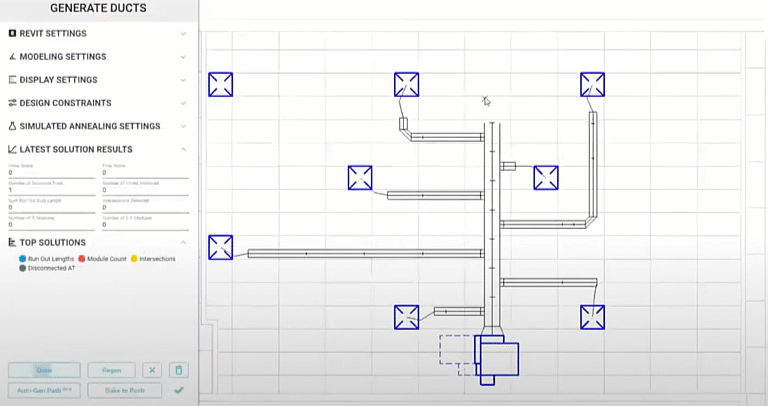Welcome to the Future of MEP Design
Revit MEP has come a long way from being just another 3D drafting tool. If you’ve been in the field long enough, you know the struggle—clunky workflows, endless clash detection, and the joys of manually adjusting ductwork over and over. The good news? Autodesk is finally making life easier for MEP designers. With AI-driven automation, cloud collaboration, and smarter analytics, workflows are getting faster and far less frustrating.
Let’s break down what’s changing and why it’s a game-changer for MEP professionals.
AI is Doing the Tedious Work for You
If you’ve ever wished Revit could just figure things out on its own, your wish is coming true. AI is stepping in to handle time-consuming tasks like routing ductwork and piping without endless adjustments. Instead of playing trial and error, AI suggests the best path while avoiding clashes before they even happen. Energy calculations are also getting a boost, with machine learning improving load predictions and helping engineers design more efficient systems right from the start.
Generative design is another exciting addition. Instead of manually placing systems and adjusting them for hours, you can let Revit propose optimized layouts. This means less time spent tweaking models and more time solving real engineering problems. The days of micromanaging every little connection and alignment may finally be behind us.
Cloud Collaboration Means No More Version Headaches
If you’re still emailing Revit files or worrying about who has the latest version, it’s time to move on. Autodesk’s cloud tools make it possible for teams to work on the same model in real time without version conflicts or lost changes. No more “Oops, I was working on an outdated file” moments.
Beyond just keeping files in sync, cloud-based coordination makes clash detection smoother. Instead of waiting until late in the design process to discover a major issue, teams can catch conflicts early. Even better, remote access means you’re no longer tied to your workstation. Whether you’re at a job site, working from home, or just reviewing something quickly from your phone, your model is always accessible.
Data-Driven Design is Smarter Design
Revit is evolving beyond being just a 3D model—it’s becoming an intelligent system packed with valuable data. Engineers can now use AI-powered analytics to make better design choices. Predictive maintenance, for example, is changing how buildings are managed. By linking BIM models to IoT sensors, teams can monitor system performance in real time and even predict failures before they happen.
Another major shift is automated code compliance. Instead of manually checking designs against regulations, AI can now review models and flag potential issues before they reach an inspector’s desk. Less back-and-forth means projects move faster with fewer surprises.
Sustainability is the New Standard
Sustainability isn’t just a trend anymore—it’s a requirement. Clients and regulations are pushing for greener buildings, and Revit is making it easier to design with efficiency in mind. Advanced energy analysis tools help engineers create HVAC and electrical systems that reduce waste and optimize performance. Carbon tracking features are also rolling out, allowing designers to see the environmental impact of materials and energy choices.
With AI helping optimize building performance, designers don’t have to rely on guesswork. Smarter systems lead to lower energy bills, a smaller carbon footprint, and better compliance with sustainability standards.
What’s Next?
Autodesk isn’t stopping here. AI-generated MEP layouts are on the horizon, meaning Revit will soon be able to automatically adjust system designs based on space constraints and project requirements. Integration with fabrication tools is also improving, making it easier to transition from design to prefab without costly errors. Digital twin technology is becoming more advanced as well, offering real-time monitoring and management of building systems long after construction is complete.
Final Thoughts: Work Smarter, Not Harder
If you’re still using Revit like it’s 2015, you’re missing out. AI, automation, and real-time collaboration are here to take the repetitive tasks off your plate so you can focus on the bigger picture. The best way to stay ahead is to embrace the tools that make your job easier. Less manual work, fewer headaches, and better results—that’s where MEP design is heading.
What’s the biggest challenge you see in Revit MEP today? Let’s talk about it!
To learn more about Autodesk’s artificial intelligence check out this Link
-Nick




Leave A Comment